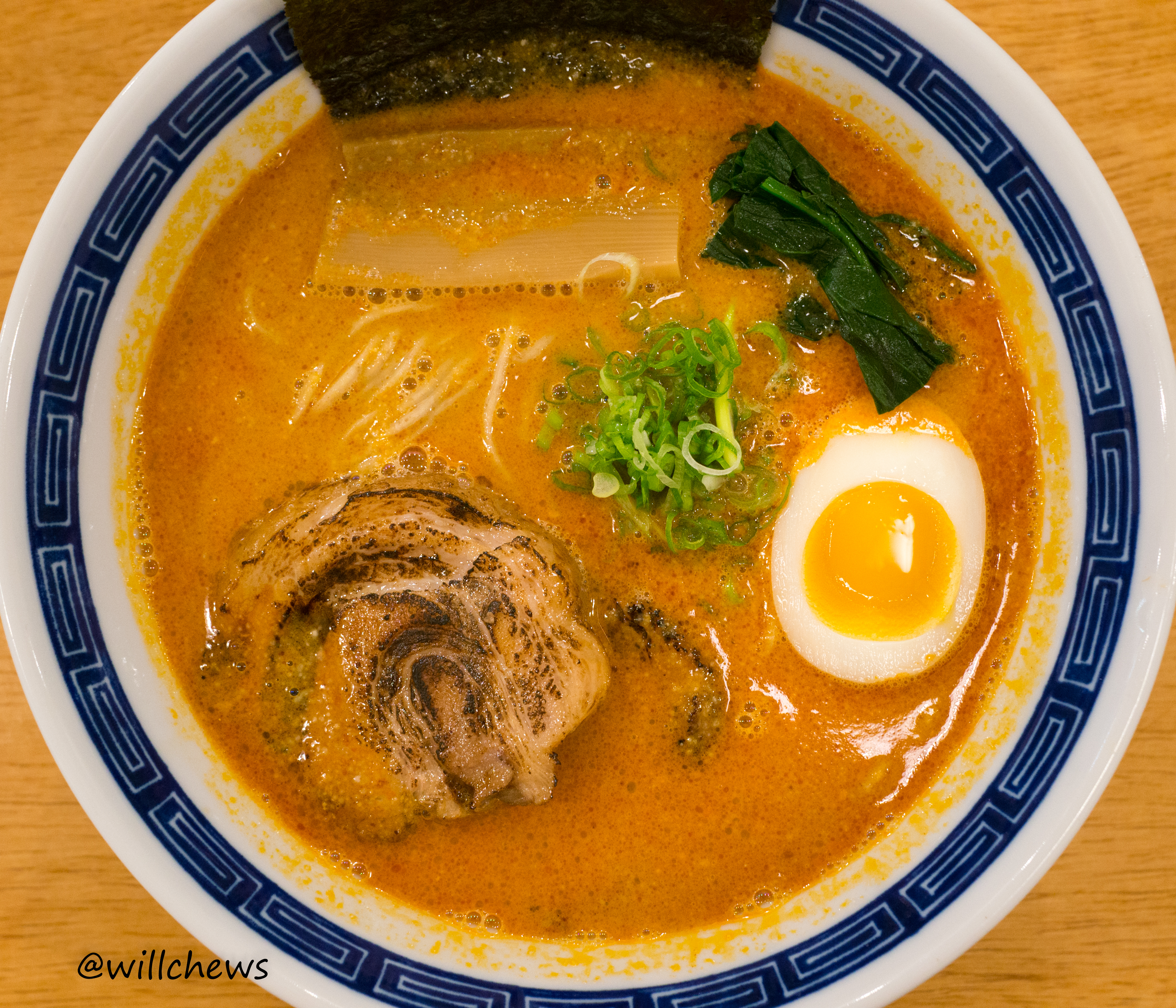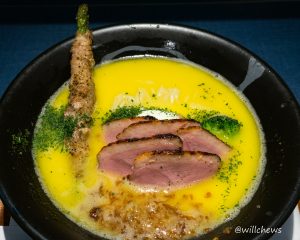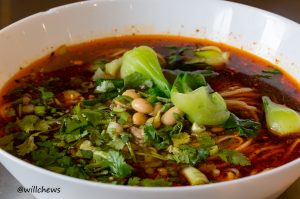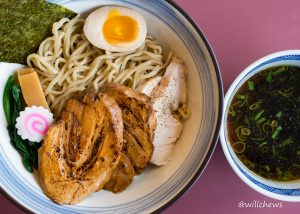Tantanmen (担々麵) is a distinct subset of Japanese ramen that draws inspiration from Sichuanese dandan noodles (dandanmian, 担担麵), but like all transplanted products, have evolved into its entirely own style in its new home. Both styles share similarities with their use of Sichuan peppercorns for numbing heat, and both primarily use minced pork as the meat complement, though there are exceptions in the Japanese case. The main differences comes to soup and noodles. The Sichuanese original is usually soupless since the dish was originally shoulder-carried by street hawkers, so soup meant excess weight to carry. The noodles differ because tantamen generally use ramen noodles in Japan. There are also some finer differences concerning the use of chili oil vs. paste, and the amount of sesame paste to be used, but I’m not entirely sure.
These details elude me in part because I’ve so rarely gotten tantanmen in the past, going so far as to order shoyu ramen instead of the signature tantanmen from Naikryu–the second ramen shop in Japan to get a Michelin star–when I visited the shop for my 100th bowl of ramen. I’m not quite sure why that’s the case, though I suspect it’s a combination of reasons stemming from my preference for assari broth, my soft-dislike of the akali flavor and numbing spice of Sichuan peppercorns, as well as a lingering discriminatory perception of tantanmen as not quite “real” ramen.
But Hosaki’s excellent tantanmen corrects these prejudices, thanks in part to its broth and noodles. The broth is notable because I got a chance to try Eric’s soupless tantanmen prototype over the summer; it was good, but I thought the homemade sesame paste overwhelmed all the other flavors in the dish. Yet in soup form, there is far better balance between the homemade chili oil and sesame paste, with both flavors soaked up with Eric’s “triple threat” of broths: tonkotsu, chicken chintan, and dashi. It’s an excellent broth, and it was a struggle between wanting to finish the broth and daily sodium intake concerns.
The other standout part of this bowl were the noodles. Partly because of the pandemic, Hosaki started making noodles in-house over the summer, which I got to sample both at the old shop and at the DC opening. They were good, but not attention-grabbing. This is not a slight: of the three major components of ramen–broth, chashu, noodles–the latter has the most trouble standing out. This is true even in Tier 1 bowls. Offhand, I would say two major reasons are: 1) shops outsourcing from a few major manufacturers, such as Sun Noodles in the US, Mikawaya Seimen in Japan; 2) the inherently less pronounced flavor of noodles. Where noodles have stood out, such as at Sansanto, it’s almost invariably at shops that make their own noodles..
That said, the noodles in Hosaki’s tantanmen were really special: they were firm with a lot of bite to them without any of the eggy, alkali taste that one often associates with firm ramen noodles. If anything the texture of Hosaki’s noodles reminded me of handmade (buckwheat) soba noodles. I checked in with Eric afterwards and he affirmed that yes, he has been tweaking the noodle recipe. I still can’t stop thinking about them, even two days later: it’s rare that ramen noodles have such a hold on me.
Finally, this is old news by now but but the toppings shouldn’t be taken for granted: the pork belly chashu is still succulent, the ajitama still jelly, and the menma is still thick. Note that Hosaki uses chashu instead of minced pork as is the norm in tantanmen, but I don’t think that detracts from the bowl.
After many reviews of Hosaki, it’s not surprising that I’m giving yet another one of their bowls a Tier 1 rating. But I think this bowl goes beyond that, earning a “Best of the Best” (BotB) tag. I often wonder that, having not been in Japan for nearly 2 years (and counting), if my standards have fallen to the point where I might be too generous with my ratings. But that’s not the case here, as Hosaki’s managed to snag the trifecta of excellent broth, chashu, and now notably, noodles. It’s testament to the shop’s hard work, but it also reflects Eric’s dedication to his craft and his constant innovation, looking for new styles to try or things to improve. I may hem and haw if a Tier 3 in the US is truly a Tier 3 in Tokyo, but there is no doubt that this is a great bowl and Hosaki could compete with any shop in Japan.
Q Factor: No wait list at 1940 on a Weekday
Sense: Someone saw my tantanmen and was going to get it before deciding to get the Triple Threat
Price: Tantanmen ($18) + Tax/Tip
Menya Hosaki
845 Upshur St. NW
Washington, DC 20011



